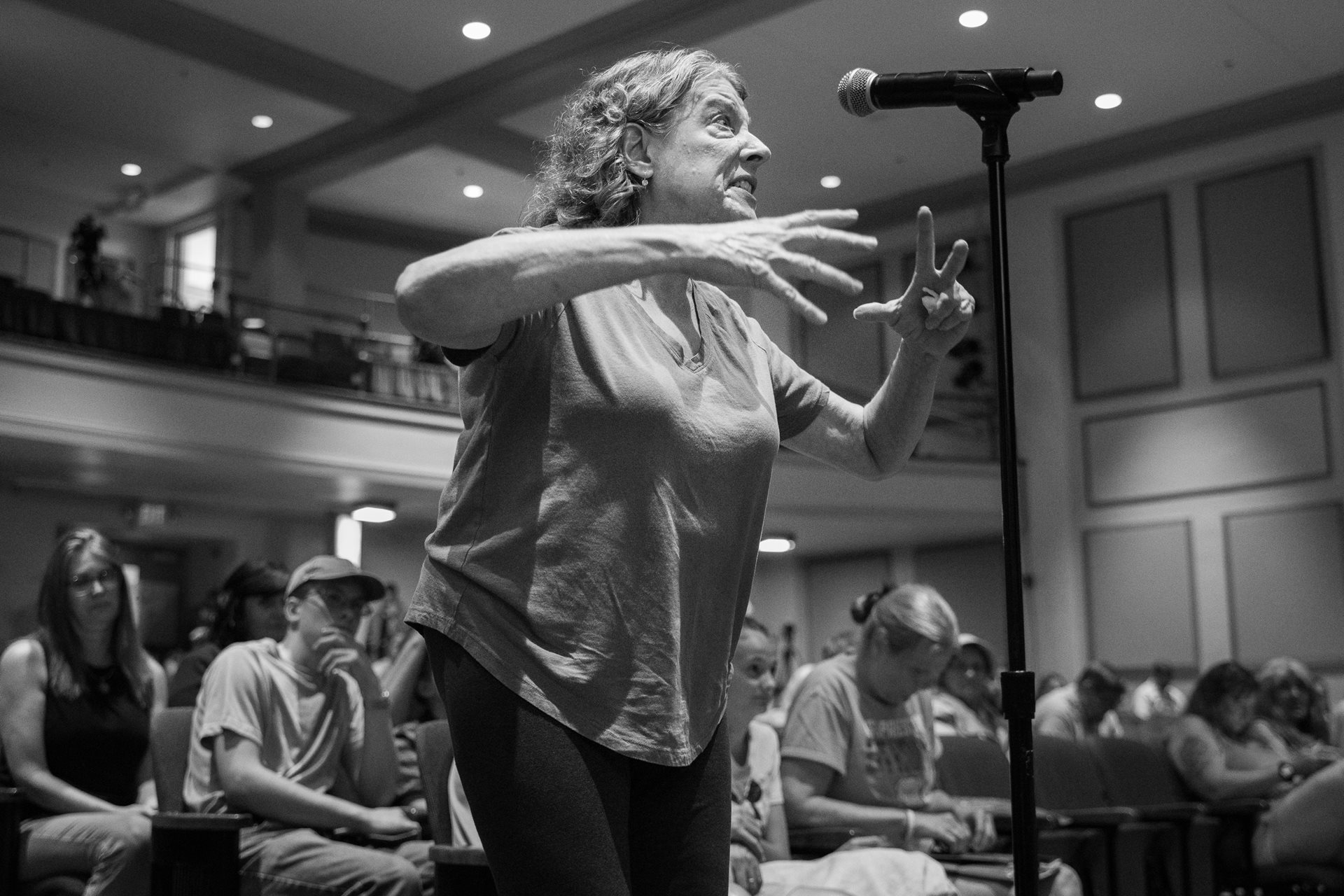Connie Fortner addresses National Transportation and Safety Board (NTSB) members after several hours of listening to the board's investigative findings. East Palestine, Ohio, United States.
On 3 February 2023, a Norfolk Southern Railway train derailed in East Palestine, Ohio, causing a fire and spilling hazardous materials into a nearby stream that feeds into the Ohio River. Eleven of the derailed cars contained hazardous materials, including 5 cars filled with the primary chemical vinyl chloride, a cancer-causing carcinogenic gas used in the production of Polyvinyl Chloride (PVC). Two days after the train crash, railcars were still burning due to chemicals. Officials, concerned that the fires would cause a car to explode, evacuated 1,500 residents and initiated a controlled release of toxic vinyl chloride, which created a toxic plume.
Despite never being designated a public health emergency by the Environmental Protection Agency (EPA), the derailment has had a significant impact on the community, with many residents reporting respiratory issues, skin irritation, headaches, and fatigue. Medical professionals continue to struggle to provide clear answers about the potential long-term effects of chemical exposure. The environmental impact to the region has been extensive, requiring removal of nearly 220,000 tons of contaminated soil and more than 74 million gallons of polluted surface water from East Palestine. Wildlife, too, has been affected, with thousands of fish dying as a result of the chemical spill. Norfolk Southern Railway now estimates the total costs related to the East Palestine derailment will top $1.1 billion, even as the railway faces additional lawsuits and additional penalties that have yet to be settled.
This project chronicles the aftermath of the disaster and its continuing impact on the local community after national media attention waned. Embedded with residents as they sought corporate accountability and navigated conflicting health information, the photographer captures the nuanced new reality of East Palestine. Together, the photographs aspire to be haunting, multidimensional, and ambiguous, conveying how trauma from the disaster motivated community members into action while simultaneously suspending them in the unknown, unsettling them with questions about their future that are increasingly familiar to all: Will our waters be safe? Will our health suffer in the years to come?
Are you a photographer and/or passionate about press freedom? Sign up for our newsletter to stay updated on our annual contest and to hear about exhibitions near you.

